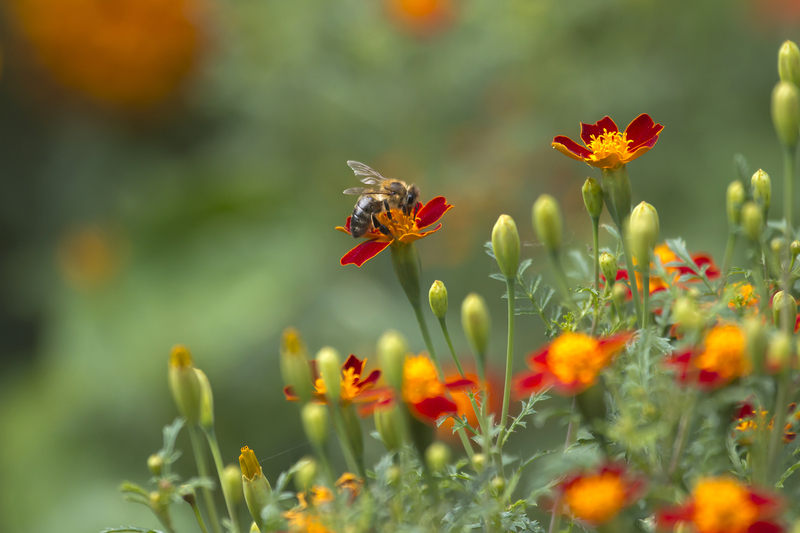Explore the World of Artful Hedge Trimming Patterns
Posted on 30/05/2025
Explore the World of Artful Hedge Trimming Patterns
Are you ready to bring an extraordinary touch to your garden? Artful hedge trimming patterns can transform even the simplest outdoor spaces into a visual delight. From intricate geometric forms to whimsical animal shapes, hedge art is a creative gardening trend that showcases both your horticultural skills and your imagination. Whether you wish to impress your neighbors or craft a peaceful retreat, discovering hedge sculpting techniques will elevate your landscape to new heights.
Table of Contents
- The History of Artful Hedge Trimming Patterns
- Popular Styles and Patterns in Hedge Sculpting
- Benefits of Artful Hedge Shaping
- Getting Started: Tools and Basic Techniques
- Step-by-Step Guide: Creating Your First Hedge Pattern
- Inspiring Examples of Creative Hedge Patterns
- Maintenance Tips for Long-Lasting Hedge Designs
- Conclusion: Unleash Your Creativity in the Yard
The History of Artful Hedge Trimming Patterns
The art of trimming hedges--also known as topiary--dates back centuries. Its roots can be traced to ancient Roman gardens, where topiary served as a symbol of wealth and order. Over the years, this practice flourished throughout Europe, especially during the Italian Renaissance and in formal French gardens. Hedge sculpting reached its height in grand European estates, where geometric, spiral, and animal forms adorned palace grounds.
The tradition of artful hedge shaping continues today, with modern gardeners pushing the boundaries of creativity. Whether you're inspired by history or keen to start a new trend, the world of hedge patterns is yours to explore!
Popular Styles and Patterns in Hedge Sculpting
If you've ever strolled through a botanical garden or admired a well-manicured estate, you've likely seen the stunning effects of hedge artistry. With several hedge trimming pattern styles to discover, there's something to suit every taste and skill level.
Classic Geometric Patterns
- Box Shapes: Perhaps the most recognizable, box-shaped hedges offer clean lines and a sense of order, perfect for formal gardens.
- Cones and Pyramids: These patterns add height and elegance, often used to frame entrances or pathways.
- Spirals: Spiral hedges demand attention and instantly add whimsy to any outdoor space.
- Domes and Spheres: Smooth curves soften the landscape, providing contrast to sharp corners.
Organic and Naturalistic Patterns
- Cloud Pruning: Originating from Japanese garden design, this technique shapes shrubs into cloud-like clusters, creating a serene, dreamy effect.
- Waves: Undulating curves can mimic ocean waves or rolling hills, lending a dynamic feel to the garden.
- Irregular/Free-Form: Let your creativity flow with unpredictable, abstract forms that reflect your personality.
Whimsical and Representational Designs
- Animal Topiary: Bears, birds, and even dolphins can emerge from skilled hands and patient trimming.
- Architectural Replicas: Turn hedges into miniature castles, arches, or obelisks!
- Themed Designs: Create storybook motifs, initials, or holiday symbols for a touch of fun and originality.
Tip: The key to success is choosing a hedge pattern that matches your garden's overall style and your own level of commitment to regular maintenance.
Benefits of Artful Hedge Shaping
While hedge trimming art is visually stunning, its advantages extend beyond style:
- Increased Curb Appeal: Eye-catching patterns set your property apart and can boost market value.
- Privacy and Noise Reduction: Dense, structured hedges act as natural screens and sound barriers.
- Improved Plant Health: Regular trimming promotes lush growth and minimizes disease risk.
- Wildlife Habitat: Strategically shaped hedges provide shelter and food for birds and beneficial insects.
- Personal Satisfaction: There's nothing quite like the pride of maintaining a living piece of art!
Investing time in creative hedge trimming designs can also be a relaxing, meditative hobby that lets you connect with nature while expressing your artistic side.
Getting Started: Tools and Basic Techniques
Embarking on your journey with decorative hedge shaping begins with preparation. The right tools and understanding of basic methods ensure quality results and keep your plants healthy.
Essential Tools for Hedge Shaping Patterns
- Hedge Shears: Manual or electric, these are must-haves for crisp lines and broad surfaces.
- Secateurs/Pruning Shears: Perfect for detail work and shaping smaller branches.
- Topiary Frames: Wire guides that help beginners train shrubs into specific forms.
- String Lines or Stakes: Useful for marking straight lines and reference points.
- Gloves and Protective Gear: Safety first--protect your hands and eyes during trimming.
Basic Techniques for Beginners
- Start with Healthy Plants: Choose species like Boxwood, Yew, or Privet, known for dense growth and resilience.
- Plan Your Design: Sketch your desired hedge trimming pattern on paper or use digital apps for visualization.
- Work Slowly: Trim in small increments; you can always cut more, but you can't put branches back.
- Step Back Often: Regularly assess your progress from a distance to maintain symmetrical proportions.
- Don't Rush the Process: Some intricate forms may take several seasons to reach their final shape.
Step-by-Step Guide: Creating Your First Hedge Pattern
Ready to try your hand at hedge pattern creation? Here's a simple process for beginners, focusing on a classic geometric design. This easy-to-follow tutorial will set you on the path toward more complicated artistry in the future.
Step 1: Select the Right Hedge Plant
Choose a shrub species suited to your climate and design goals. Boxwood, Privet, and Japanese Holly are favorites for their compact foliage and easy shaping.
Step 2: Outline Your Design
Use string or stakes to mark the outline of your intended shape--such as a cube or dome. This technique ensures symmetry and accuracy.
Step 3: Begin Trimming - Top First
Start from the top and work down. Hold shears parallel to the ground for a level result. Progress to the sides, continually checking that each face is even.
Step 4: Fine Tune the Details
Use pruning shears for corners and hard-to-reach places. Take your time to refine curved or angled edges for a professional finish.
Step 5: Step Back and Assess
Every few minutes, move several steps back to view the hedge from different angles. Adjust as needed to correct asymmetry or missed spots.
Step 6: Clean Up and Mulch
Clear away clippings. Applying mulch at the hedge base will retain moisture and suppress weeds, promoting healthy regrowth.
Inspiring Examples of Creative Hedge Patterns
Still looking for ideas? The world is filled with jaw-dropping hedge trimming art ready to inspire your own garden. Here are some patterns and artists to explore:
- The Levens Hall Topiary Gardens, England: These centuries-old gardens boast statuesque abstract shapes, spirals, and even chess pieces!
- Chateau de Villandry, France: Renowned for checkerboard and scrollwork patterns made entirely of clipped shrubbery.
- Disney World's Topiaries, USA: Beloved Disney characters and scenes emerge from masterful hedge sculpting.
- Private Artists: Creatives like Graham Downie and Pearl Fryar have wowed the world with custom animal and geometric patterns.
Don't be afraid to start small--a spiral or undulating wave may be all you need to add garden personality. As your skills grow, branch out into more daring designs!
Maintenance Tips for Long-Lasting Hedge Designs
Well-maintained hedge trimming patterns reward you with beauty year-round. Follow these key tips to keep your living artwork in top shape:
Regular Pruning Schedule
- Trim most hedges two to three times a year during their growing season.
- Remove dead or diseased wood immediately to prevent spread.
- Lightly prune in late winter or early spring to encourage dense growth.
Fertilization and Watering
- Apply balanced fertilizer in spring to stimulate robust foliage.
- Mulch the base to conserve moisture and suppress weeds.
- Water consistently, especially during hot months or drought.
Pest and Disease Management
- Inspect regularly for signs of insects or fungal issues.
- Prune affected branches and use eco-friendly pesticides as needed.
Shaping Touch-Ups
- Minor touch-ups every few weeks keep edges crisp and prevent the shape from "fuzzing out."
- Always clean your tools between uses to prevent disease transmission.
Conclusion: Unleash Your Creativity in the Yard
The journey into the world of artful hedge trimming patterns is as rewarding as it is beautiful. With the right tools, a basic understanding of technique, and a willingness to experiment, you can create living masterpieces in your own backyard. Whether you choose traditional geometric forms or personal, free-form designs, each hedge becomes a unique expression of your gardening style.
Let your imagination soar--explore, experiment, and enjoy each step of shaping nature's green canvas. For more tips and inspiration on hedge art patterns and garden creativity, make sure to bookmark this guide and revisit as your skills flourish!
Ready to make your garden stand out? Dive into hedge trimming designs and discover the artist within you today!



